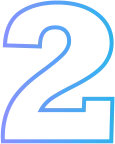Commodity trading offers a variety of opportunities for investors looking to diversify their portfolios, hedge against inflation, or capitalize on global market trends. Commodities include a wide range of assets, from energy resources like crude oil and natural gas to metals such as gold, silver, and copper. In this article, we explore the best indices to trade for commodity exposure, specifically focusing on energy, metals, and other critical commodity sectors. Understanding these indices helps traders make informed decisions and optimize their strategies.
Types of Commodities and Their Significance
Before diving into the best indices for trading, it’s crucial to understand the different types of commodities and their significance in the market. Commodities are typically divided into two main categories:
Energy Commodities
Energy commodities include products like crude oil, natural gas, and refined fuels such as gasoline and heating oil. These commodities play a critical role in the global economy, affecting everything from transportation costs to manufacturing.
Crude Oil
Crude oil is one of the most actively traded commodities globally, with markets deeply connected to global supply and demand dynamics. Fluctuations in crude oil prices often reflect geopolitical events, economic growth, and technological advancements.
Natural Gas
Natural gas, another important energy commodity, is essential for electricity generation and heating. Natural gas markets are particularly sensitive to changes in weather, as colder winters increase demand for heating.
Metals Commodities
Metals commodities can be further divided into two main categories: precious metals and industrial metals.
Precious Metals
Precious metals like gold, silver, platinum, and palladium are often seen as safe-haven assets during times of market uncertainty. These metals are used in various industries, including jewelry, electronics, and automotive, while also being valuable stores of wealth during economic downturns.
Industrial Metals
Industrial metals, such as copper, aluminum, and zinc, are essential in manufacturing processes and infrastructure development. These metals tend to perform well in strong economic periods, as demand for construction and manufacturing rises.
Agricultural Commodities
While energy and metals are often the focus, agricultural commodities like wheat, corn, coffee, and soybeans also provide significant investment opportunities. Weather patterns, government policies, and global consumption trends heavily influence agricultural commodity prices.
Best Indices for Energy Commodities
Energy commodities are some of the most heavily traded assets on the global market. Investors looking for exposure to this sector can turn to commodity indices that track the performance of energy assets, providing an easier way to invest in the sector.
S&P GSCI Crude Oil Index
The S&P GSCI Crude Oil Index is one of the most widely recognized benchmarks for the performance of the energy sector. This index tracks the performance of crude oil futures contracts, providing investors with exposure to price movements in the global oil market. Given that oil is a critical component of the global economy, this index is an ideal tool for traders looking to gain direct exposure to crude oil prices.
Bloomberg Commodity Index (BCOM)
The Bloomberg Commodity Index includes a diverse range of commodities, with energy commodities representing a significant portion of the index. It includes futures contracts on crude oil, natural gas, gasoline, and heating oil, offering a comprehensive look at energy prices. This index is often used by investors looking for broad commodity exposure, as it includes not just energy but also metals and agricultural products.
Energy Select Sector SPDR Fund (XLE)
While not a traditional commodity index, the Energy Select Sector SPDR Fund (XLE) provides exposure to energy stocks, including major oil companies like ExxonMobil and Chevron. For those looking to invest in the energy sector without directly trading commodity futures, this fund offers a convenient option. It provides a way to gain exposure to the performance of energy companies that are directly impacted by the price movements of energy commodities.
Best Indices for Metals Commodities
Metals are another important component of commodity trading. Whether it’s for their role in industrial applications or their status as a store of value, investing in metal commodities can offer significant opportunities for traders.
S&P GSCI Industrial Metals Index
The S&P GSCI Industrial Metals Index tracks the performance of a basket of industrial metals futures, including copper, aluminum, zinc, and lead. This index provides a way to gain exposure to industrial metals, which are key to global manufacturing and infrastructure projects. As such, this index tends to perform well in times of economic expansion when demand for these metals is higher.
London Metal Exchange (LME) Index
The London Metal Exchange (LME) is the world’s largest market for industrial metals, and its LME Index is a key benchmark for trading in this sector. The LME Index tracks the performance of a basket of metals traded on the exchange, including copper, aluminum, and nickel. This index is popular among traders seeking to invest in the metals market with a focus on supply-demand fundamentals.
iShares Silver Trust (SLV)
For those interested in precious metals, the iShares Silver Trust (SLV) provides a straightforward way to invest in silver. This exchange-traded fund (ETF) tracks the price of silver bullion, offering exposure to one of the most historically significant metals in both industrial and investment contexts. Although it’s focused solely on silver, SLV provides a simple means of trading this important metal without dealing directly in futures contracts.
SPDR Gold Shares (GLD)
Another popular ETF for precious metals investors is the SPDR Gold Shares (GLD). It tracks the price of gold and is one of the largest gold ETFs in the world. Investors turn to GLD as a hedge against inflation and financial instability. As gold is a traditional store of value, this ETF is often favored during times of economic uncertainty.
Best Indices for Agricultural Commodities
Agricultural commodities can offer unique opportunities for traders, especially given their sensitivity to weather patterns, political decisions, and seasonal trends. Indices that focus on these commodities provide easy access to this often overlooked sector.
S&P GSCI Agriculture Index
The S&P GSCI Agriculture Index is a broad-based commodity index that includes futures contracts on a variety of agricultural products, such as wheat, corn, soybeans, and coffee. This index is particularly useful for traders looking to gain exposure to the agricultural sector as a whole, offering diversification across different agricultural products.
iPath Series B Bloomberg Grains Subindex Total Return ETN (JJG)
For those focused specifically on grains, the iPath Series B Bloomberg Grains Subindex Total Return ETN (JJG) is an excellent option. This exchange-traded note tracks the performance of futures contracts on wheat, corn, and soybeans, providing a targeted way to invest in these essential agricultural commodities.
Teucrium Corn Fund (CORN)
The Teucrium Corn Fund (CORN) is an ETF that tracks the price of corn futures. Corn is a staple agricultural commodity, and its price is influenced by a variety of factors, including global demand, weather conditions, and government policies. CORN is a good option for those who want direct exposure to corn price movements without trading futures contracts.
Choosing the Right Commodity Index
Selecting the best commodity index depends largely on the investor’s goals, risk tolerance, and specific interests in the commodity markets. For example, investors focused on the energy sector may prefer the S&P GSCI Crude Oil Index or the Bloomberg Commodity Index for a broad view of energy prices. Those interested in precious metals may find ETFs like GLD or SLV more appropriate for their investment strategy. Industrial metals, on the other hand, may attract traders looking at the S&P GSCI Industrial Metals Index or the LME Index.
It’s also important to note that many commodity indices are composed of futures contracts, which carry their own risks and require active management. Investors should consider their level of experience with commodity futures before diving into these indices.
Risk Factors in Commodity Trading
While commodity trading offers ample opportunities, it also comes with risks. Commodity prices can be highly volatile, influenced by factors such as geopolitical events, natural disasters, changes in supply and demand, and shifts in government policies. These factors can lead to significant price swings, making it essential for traders to stay informed and manage their risk appropriately.
Leverage is another consideration. Many commodity traders use leverage to amplify their returns, but this also increases the potential for significant losses. Leveraged ETFs and futures contracts are popular tools, but they can be risky for less experienced traders.
Conclusion
Commodity trading provides investors with an effective way to diversify their portfolios and gain exposure to vital sectors like energy, metals, and agriculture. The indices discussed in this article are some of the best tools for gaining access to these markets. Whether you’re interested in the price movements of crude oil, the performance of industrial metals, or the fluctuations in agricultural commodities, understanding these indices is crucial for making informed investment decisions.
By carefully selecting the right commodity index and managing risk, investors can potentially benefit from the dynamic and ever-evolving world of commodity markets.










